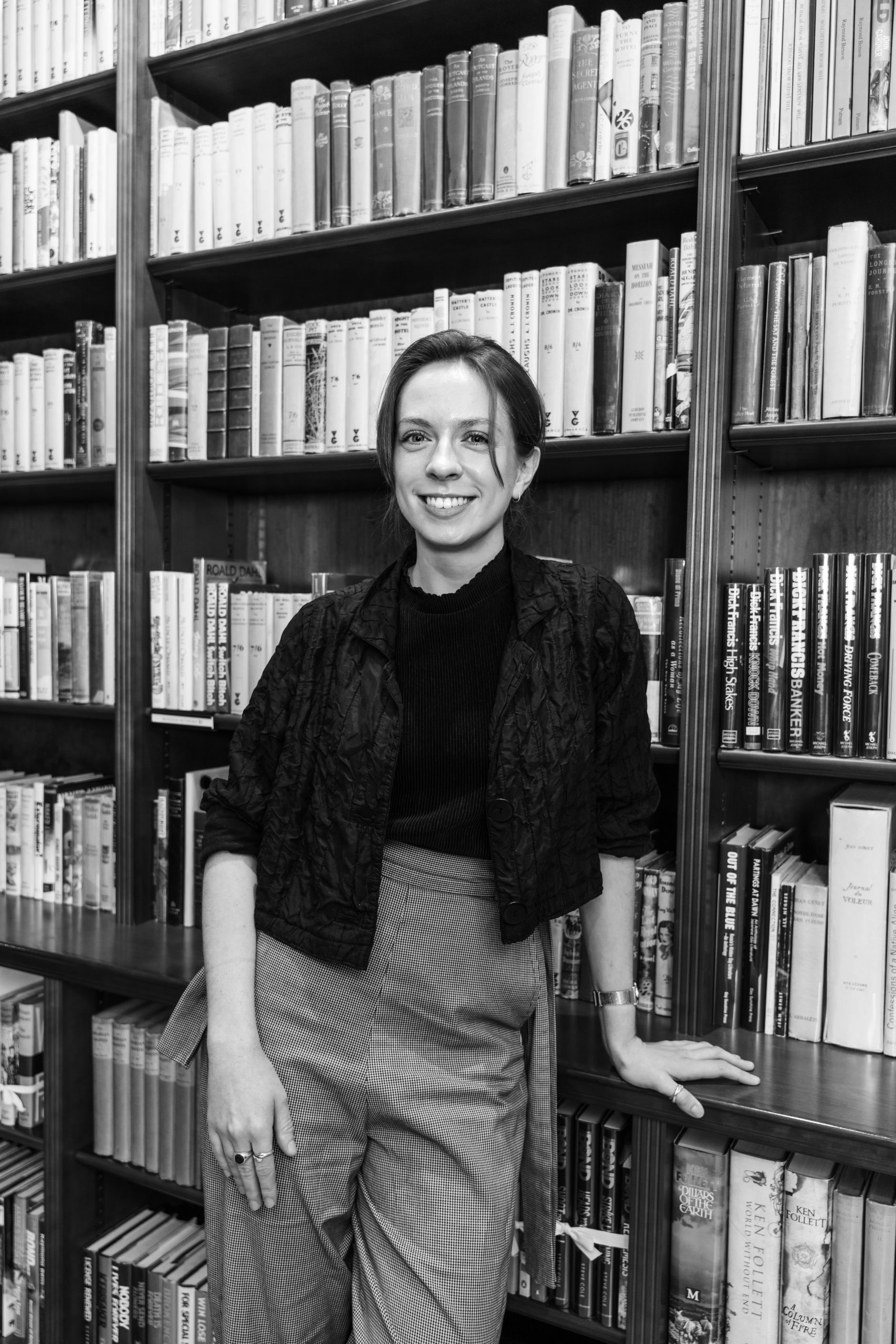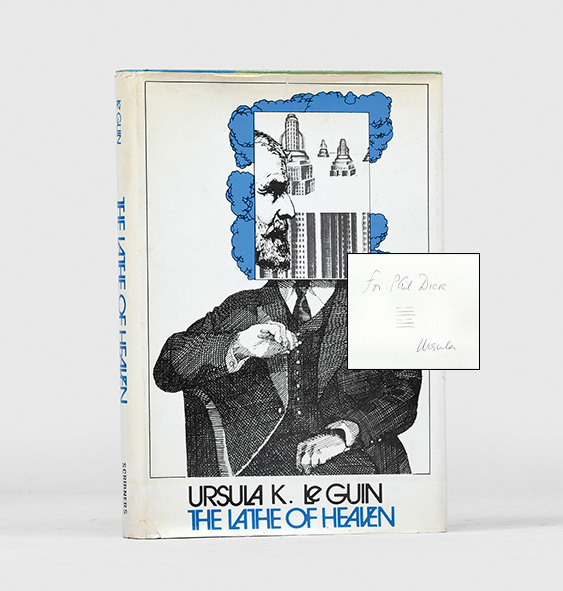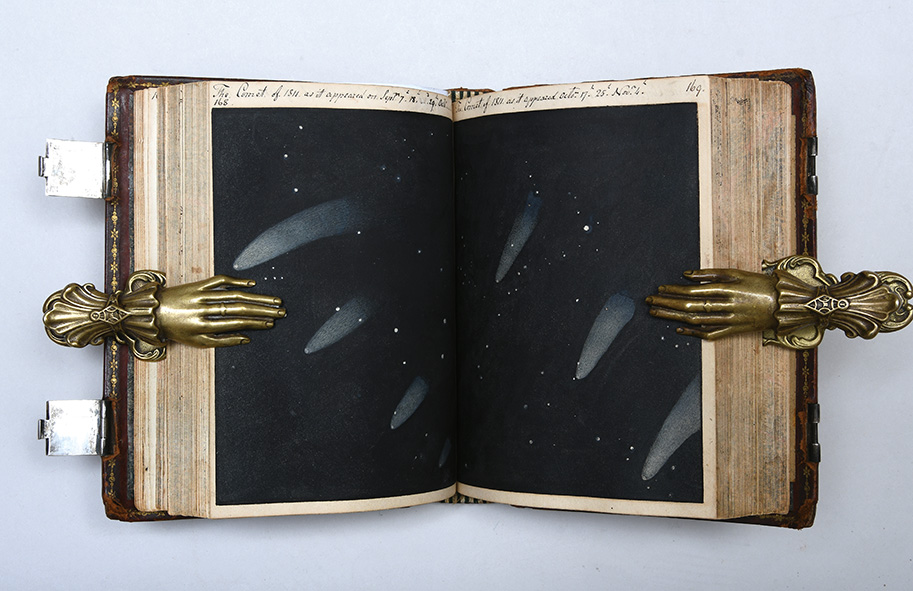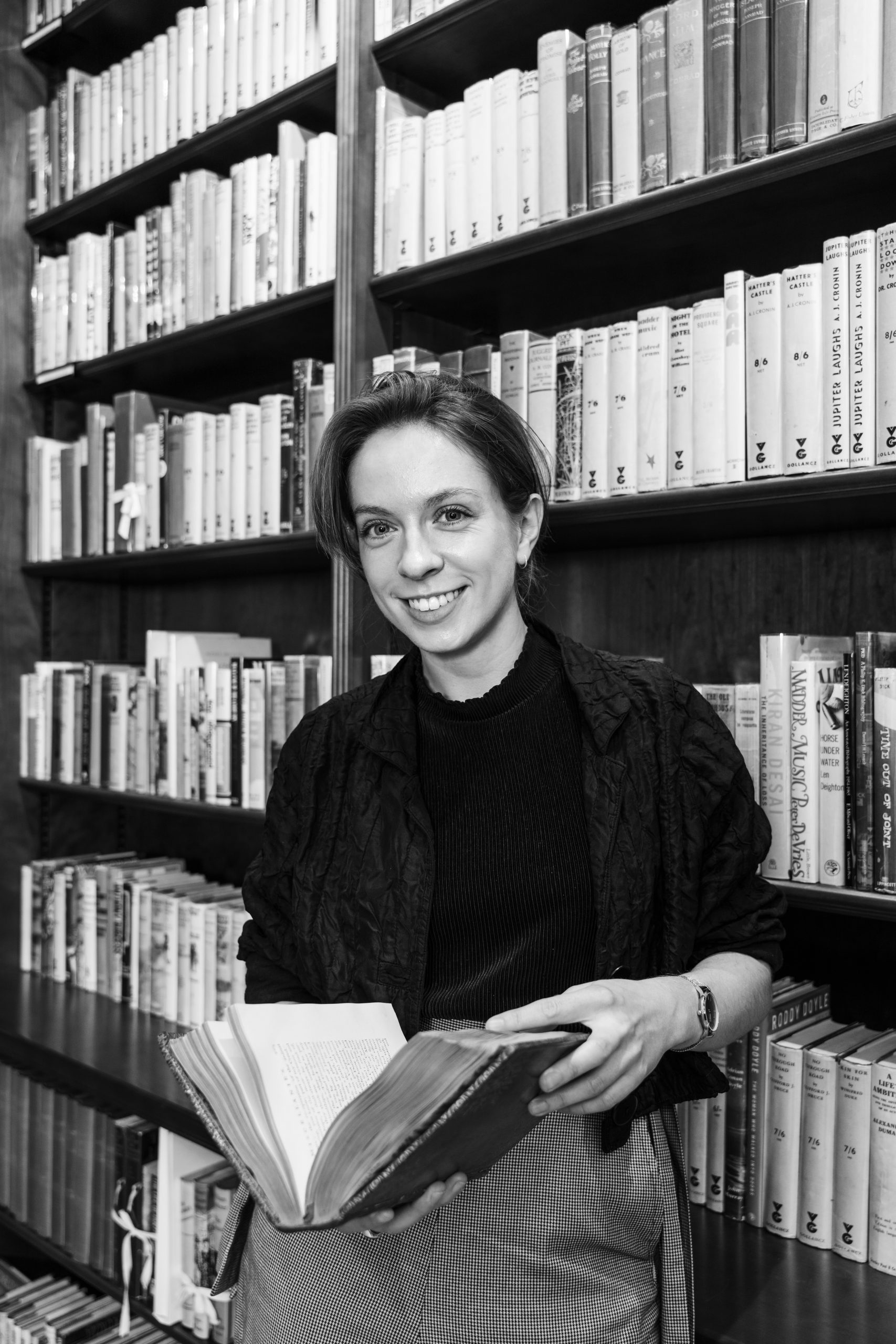The latest in our The Booksellers series sees our cataloguer Anna Middleton discuss her interest in science fiction and counterculture, the importance of book fairs, and what’s currently on her cataloguing desk.
How did you get started as a rare bookseller?
I started off right here, at Peter Harrington Rare Books. I was reading English at Oxford when the rare book trade first appeared on my radar, courtesy of the Bodleian’s Special Collections. A little while later, I found myself in London, and decided to see if it was the career for me. That was four years ago.
I almost exclusively catalogue modern literature and counterculture. My preferred materials to work with are manuscripts, letters, and association copies of books from the 20th century – the pen-in-hand moments that offer snapshots of human relationships and the work of writers outside of their finalized first editions. I enjoy contextualizing works and exploding myths of individual, isolated genius. Writers sometimes have veils of mystique drawn around them, so it’s refreshing to handle letters where they’re begging their publisher for an advance, or drafting poems with an eye to featuring in a magazine they know will gain them dinner-party clout. I value the things that make the people we venerate human again.
You have a specific interest in counterculture. How does that translate to your work as a bookseller?

It’s a broad term, but we can say that it includes anything pushed out of our normal canon of value, the histories that exist between the gaps, particularly in the rare book trade. Things like a first edition of an Origin of Species or a Harry Potter are already well-known, so don’t need much explaining. I find it satisfying to dig into a little-known text and communicate not just why it’s important, but also to suggest why it hasn’t been considered as such before. Sometimes it’s the contents of these works that have seen them shunned – books about grassroots political movements, alternative societies, sexuality, drugs, discrimination. Sometimes it’s the form they appear in – periodicals, pamphlets, posters, handbills. There are collectors and institutions who are interested in questioning why we hold certain things dear above others, and it’s a pleasure to be part of that conversation.
Can you talk a little about your work with rare science fiction books?
Similarly to counterculture works, science fiction was rejected by “serious” literary audiences for a long time, but now we’re constantly having to replenish stocks of many of my favourite authors: Ursula le Guin, Philip K. Dick, William Gibson. It’s a literary genre that seems to be going from strength to strength and is increasingly prescient – the concepts explored in books like Snow Crash and I, Robot are barely a hairsbreadth from our own reality, for better or worse.

Is there an item you’ve catalogued that you found particularly interesting?
Perhaps the pinnacle of association copies I’ve handled was a first edition of Lathe of Heaven, inscribed by Ursula K. Le Guin to Philip K. Dick with a symbol from the I Ching, connoting joy and friendship. It is possibly the premier association copy in modern science fiction: Dick was basically the dedicatee of the book, as well as being the main character. It was the perfect marriage of my love for association copies and science fiction.

If you could choose one item from Peter Harrington’s stock to keep for yourself, what would it be?
It’s too hard to choose something from items I’ve catalogued, so I’d take something that aligns with my interests, but would never end up on my desk. We have a beautiful astronomical manuscript by Henry Ferdinand Pelerin, an 18th-century science enthusiast who created a commonplace book of his learning and interests. It’s clear, elegant, wonderfully preserved, and is filled with watercolour and gouache illustrations. There are a handful depicting comets and the night sky that bring me a lot of joy.
You attend and exhibit at book fairs on behalf of the company. Could you summarize the significance of attending fairs and meeting the book-buying public in that capacity?
There’s a lot to be said for taking the shop to customers, rather than waiting for them to visit us. You can chat with overseas collectors in person, which often leads to more meaningful conversations about what books interest them. It’s also a good opportunity to take books back to their birthplace – an obscure private press work from a small Boston bindery might not be of interest to a London buyer, but when you take that item to the east coast of the US, there’s a better chance someone will connect with it and give it a good home.





